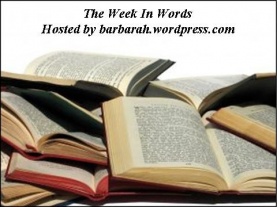As I continue my path through Eiseley library’s children’s picture book section, I become pickier and pickier about children’s books. So much is monotonous pages of empty words accompanied by bright splashes of illustrations that are equally empty. The rhythms start to grow old, the archetypes tedious. I get worn out.
So when I discover a book that is sweet without being saccharine, educational without being pedantic, and illustrated artistically without trying to be avant-garde, I get excited.
Dianna Hutts Aston wrote two such books that I thoroughly enjoyed coming across this month.
 Mama Outside, Mama Inside tells the story of two mamas preparing for their coming children. The mama outside is a bird, preparing a nest, sitting on the eggs, bringing her hatchlings food, and teaching them to fly. Mama inside is a woman, preparing a nursery for her baby, knitting a blanket, feeding her baby, and taking her new baby to the window to see the baby birds learn how to fly.
Mama Outside, Mama Inside tells the story of two mamas preparing for their coming children. The mama outside is a bird, preparing a nest, sitting on the eggs, bringing her hatchlings food, and teaching them to fly. Mama inside is a woman, preparing a nursery for her baby, knitting a blanket, feeding her baby, and taking her new baby to the window to see the baby birds learn how to fly.
The illustrations by Susan Graber are soft and realistic. I was excited to see that Gaber chose to portray Mama inside breastfeeding her child (discretely) while Papa brings a pillow. The image of an infant being fed a bottle has become iconographic–but I’d much rather have the normative image portray breastfeeding! Artists like Gaber deserve kudos for subtly working towards re-establishing breastfeeding as a normative practice.

The Second Dianna Aston book I was impressed with was An Egg is Quiet, illustrated by Sylvia Long. The book starts with the simple words “An egg is quiet. It sits there, under its mother’s feathers…on top of its father’s feet…buried beneath the sand. Warm. Cozy.” And on it goes, telling about the features of different eggs–their colors and shapes and sizes and patterns and textures. The main text is in large script, with only a short sentence or phrase per page. The bulk of the page is composed of naturalistic illustrations of different eggs, labeled for easy identification, and more detailed descriptions of whatever principle the main script is discussing in smaller (but still not small) print.
This is a delightful book that is sure to have children pouring for hours over its illustrations and dreaming about seeing all the different birds (and a few reptiles) and eggs. Parents could easily read just the large script to their youngest children, while exploring the smaller print in more detail with their slightly older children. I can see this title holding the attention of preschoolers all the way through middle-elementary school children. (It held my attention pretty well too–and I had to go back to check out Sylvia Long’s illustrations in better detail.) This is the nature book I wish I had in my home growing up.
 For more comments on children’s books, see the rest of my Reading My Library posts or check out Carrie’s blog Reading My Library, which chronicles her and her children’s trip through the children’s section of their local library.
For more comments on children’s books, see the rest of my Reading My Library posts or check out Carrie’s blog Reading My Library, which chronicles her and her children’s trip through the children’s section of their local library.








